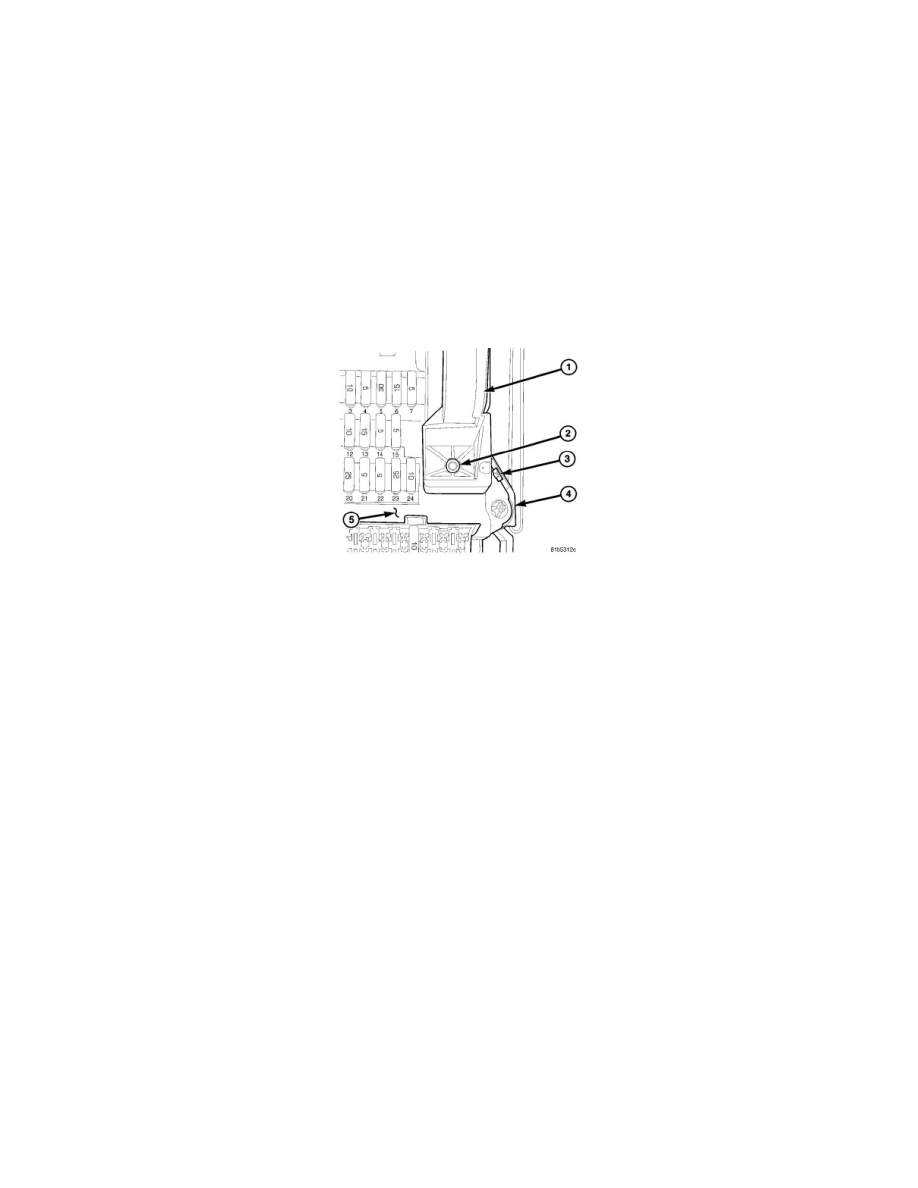Sprinter 3500 V6-3.0L DSL Turbo (2007)

Body Control Module: Service and Repair
Module-Body Control
Removal
REMOVAL
WARNING: To avoid serious or fatal injury on vehicles equipped with airbags, disable the supplemental restraint system before attempting
any steering wheel, steering column, airbag, seat belt tensioner, impact sensor, or instrument panel component diagnosis or service. Disconnect
and isolate the battery negative (ground) cable, then wait two minutes for the system capacitor to discharge before performing further
diagnosis or service. This is the only sure way to disable the supplemental restraint system. Failure to take the proper precautions could result
in accidental airbag deployment.
NOTE: Several versions of the Body Control Module (BCM) (also known as the Signal Acquisition and Actuation Module/SAM) are available, which
vary depending upon the standard and optional vehicle equipment. The size of the BCM housing changes with each version, which should aid in
identification. Be certain that a new BCM is the correct replacement for one that is being removed.
1. Disconnect and isolate the battery negative cable.
2. Remove the trim from the left cowl side inner panel.
3. Disconnect the external wire harness connections from the Body Control Module (BCM) (1) (also known as the Signal Acquisition and Actuation
Module/SAM).
4. The fuse and relay block (5) (also known as the SRB) must be lowered from behind the instrument panel for sufficient clearance to disengage the
BCM. To lower the fuse and relay block:
a. Press outward on the latch tab (3) on each side of the lower end of the fuse and relay block mounting bracket (4) on the dash panel while
pulling the lower end of the fuse and relay block rearward.
b. Pull the fuse and relay block rearward far enough to disengage it from both latch tabs and the two alignment posts integral to the lower
mounting bracket.
c. Pull the fuse and relay block downward far enough to disengage the two posts integral to the upper edge of the unit from the upper end of the
mounting bracket behind the instrument panel.
5. Remove the screw (2) that secures the lower mount of the BCM to the fuse and relay block.
6. Pull the lower mount of the BCM rearward and away from the fuse and relay block far enough to disconnect the internal interface connector, then
lift the BCM upward slightly to disengage the horizontal nailhead pin on each side of the interface connector at the top of the BCM from the
half-round cradle formations on each side at the top of the fuse and relay box interface connector receptacle.
7. Remove the BCM from the fuse and relay block.
Installation
INSTALLATION
WARNING: To avoid serious or fatal injury on vehicles equipped with airbags, disable the supplemental restraint system before attempting
any steering wheel, steering column, airbag, seat belt tensioner, impact sensor, or instrument panel component diagnosis or service. Disconnect
and isolate the battery negative (ground) cable, then wait two minutes for the system capacitor to discharge before performing further
diagnosis or service. This is the only sure way to disable the supplemental restraint system. Failure to take the proper precautions could result
in accidental airbag deployment.
NOTE: Several versions of the Body Control Module (BCM) (also known as the Signal Acquisition and Actuation Module/SAM) are available, which
vary depending upon the standard and optional vehicle equipment. The size of the BCM housing changes with each version, which should aid in
identification. Be certain that a new BCM is the correct replacement for one that has been removed.
